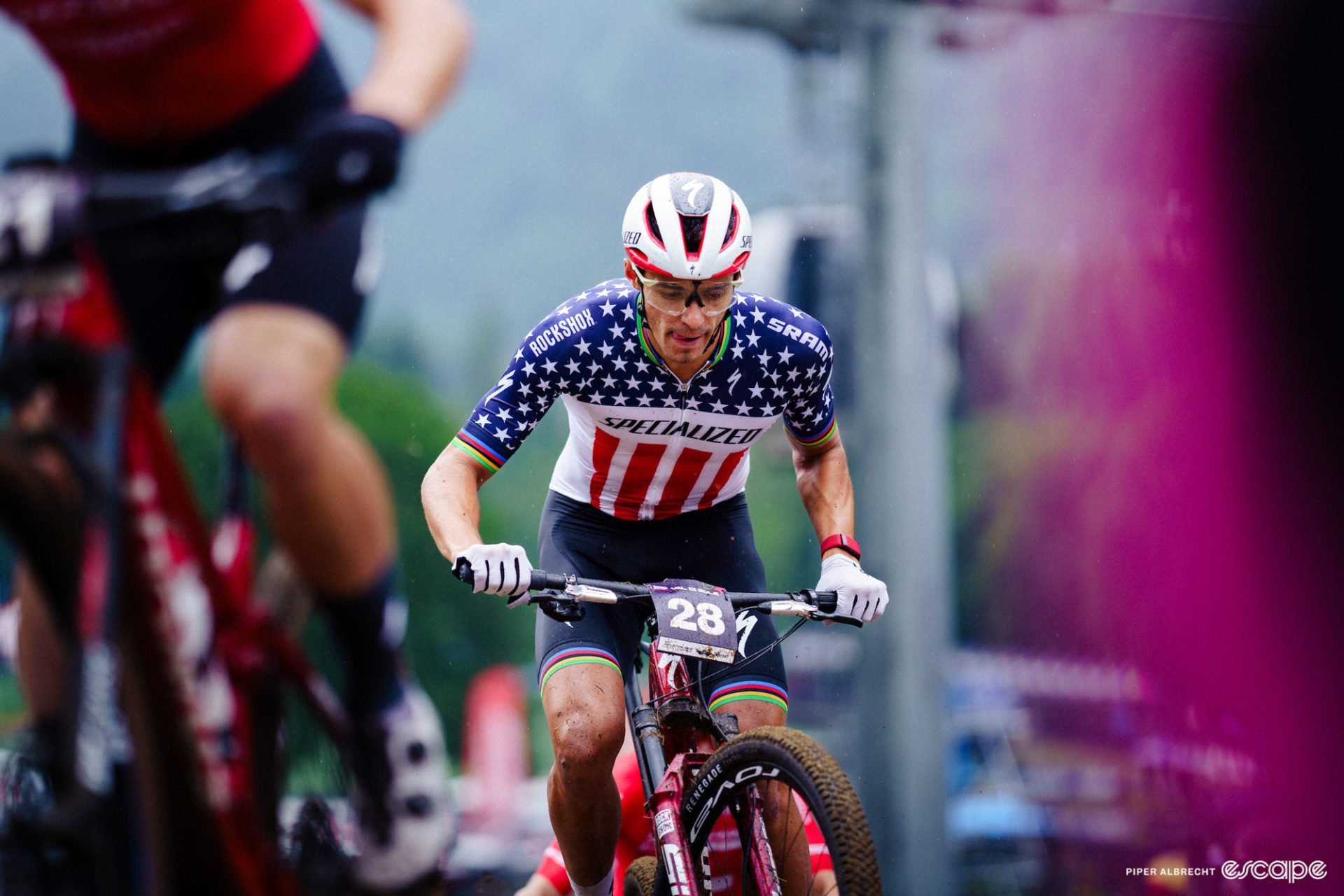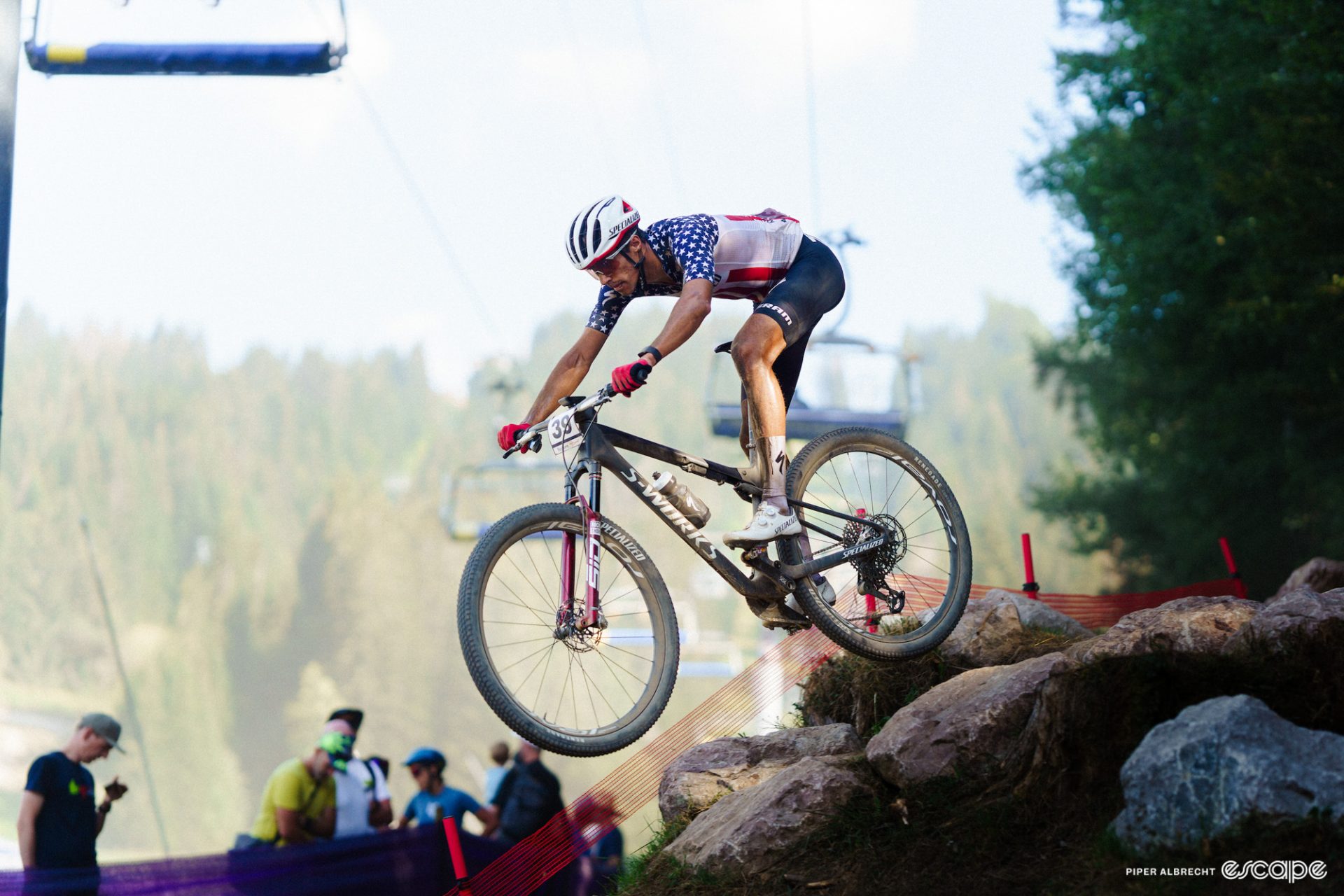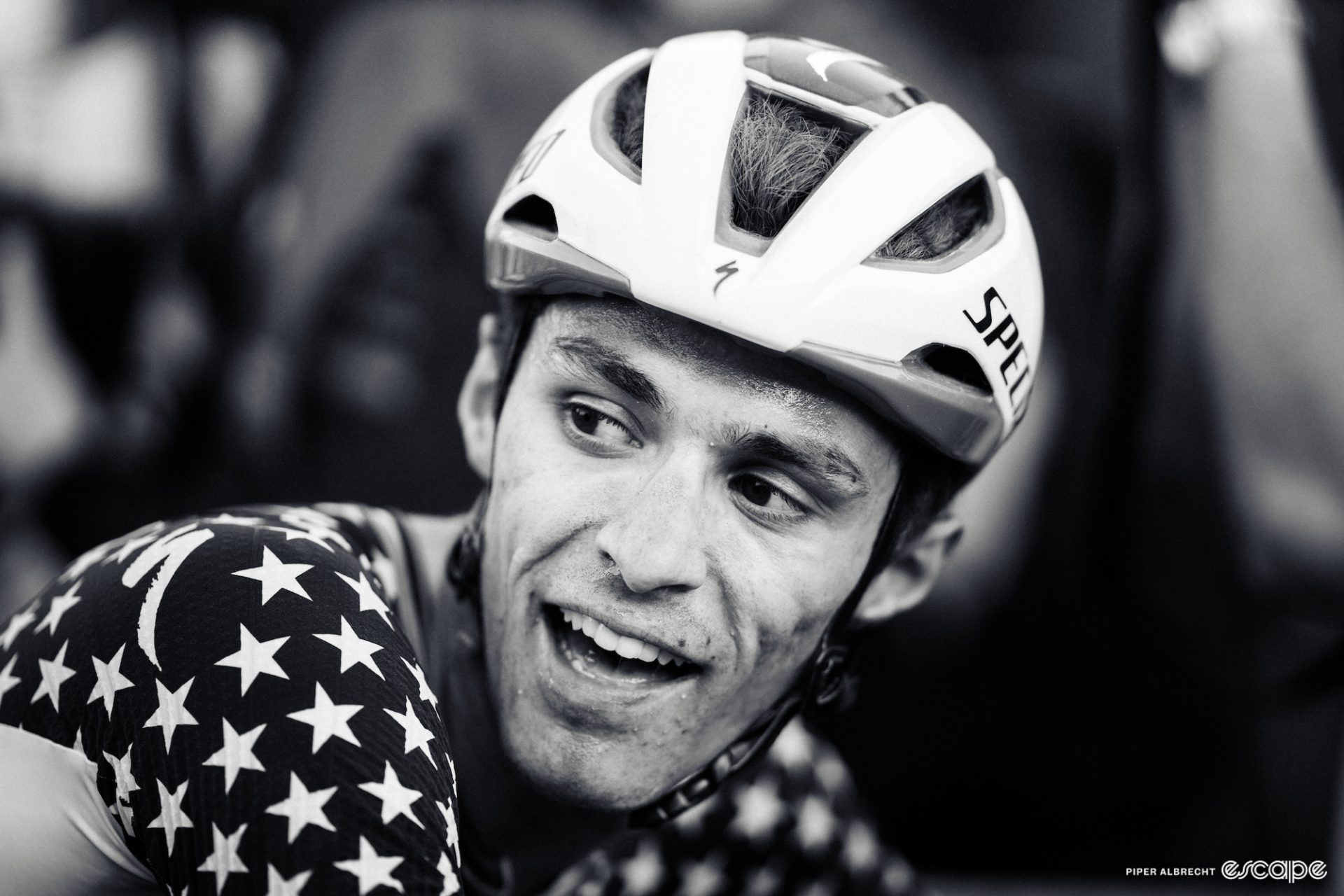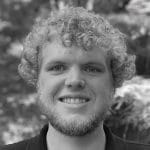A professional mountain bike racing career means long trips on the road in Europe, adjusting to jet lag, cultural differences, and time away from friends and family. It’s a well-catalogued challenge for American racers. For World Cup racer Christopher Blevins, it’s the small things that make racing in the United States special.
Costco granola, snacks from Whole Foods, and familiar coffee are all things that Belvins cites as making life just a little bit easier as he prepares to race the Snowshoe World Cup round this week. When an athlete is in a familiar environment with familiar food, that marginal difference can turn an average day into an exceptional one on the race course.
And Blevins has had a great track record of exceptional days at Snowshoe. The 2021 Short Track World Champion claimed his first career World Cup win at the West Virginian venue that same year, outpowering the likes of Nino Schurter in the closing minutes of the XCO race. Then 2022 saw him notch off a victory in the XCC under Snowshoe’s trademark foggy skies.
The Specialized Factory Racing rider from Durango, Colorado is not the only American to have success at Snowshoe. Gwendalyn Gibson won the short track last year as well, and four American women placed in the top 10 during the XCO. Just days ago, Hannah Otto won the XCM World Cup there.
What makes Snowshoe such a special venue for Americans, other than, well, good old-fashioned patriotism? One factor is the home-court advantage. The Europeans who are used to driving a couple of hours to races now have to board a transoceanic flight and then drive through the Appalachian Mountains to get there.

Blevins also shouts out the American fans, who make difficult journeys to get to the ski area. Snowshoe is a four-hour, winding drive from Washington D.C., a commitment for even the experienced American road tripper. Despite this, the fans still turn up with maximum enthusiasm.
“The fans have to work for it to get here so I think, therefore, they're extra excited,” Blevins said. “It's also just special having people cheer for you specifically rather than hearing ‘Allez, allez, allez.’”
Despite his successes in the past at Snowshoe, Blevins said he has not specifically peaked his form for the race. In 2021, his focus was on the Tokyo Olympics where he finished in 14th. Last year, he raced USA National Championships the week prior on a high-altitude course across the country from Snowshoe.
This year, however, Blevins has targeted Snowshoe and the following race in Quebec. He’ll be hoping for some of that home country magic after what’s been a frustrating season.
“You kind of sometimes get to a plateau and don't find that next edge for a little while,” Blevins said. “I think that's kind of been the story of my season, result-wise.”
He continued: “But I feel like it set me up. You have to have that plateau in order to make the next jump, and hopefully, I'm ready for that and I’ve definitely been working to put myself in a position for it.”
Blevins has ridden to a couple of top 10 finishes in short track this season, but his results have been otherwise inconsistent. On top of that, he suffered a minor concussion and broken finger after crashing while pre-riding the Glasgow worlds course with Team USA junior teammates.
When his legs aren’t firing quite as well as he’d like them to, Blevins speaks of mental strategies based on the practice of mindfulness that he tries to employ, though he admits that it’s easier said than done.
“You just drop the expectations and the narrative of how you're doing and focus on whatever is happening in that moment,” he said. “I mean, that's mindfulness through and through.”
“How am I feeling, like honestly, what's happening in my legs and in my body? If you’re focused on the hands on the handlebars, tires on the ground, and what's right in front of you, then that's when what we talk about [as] 'flow' happens, and that's only when that happens in my experience.”

The American scene
When Blevins and the rest of the World Cup field line up in Snowshoe this week, it will be against an American cycling backdrop that has changed vastly in a few short years. There are fewer opportunities to race at an elite level in traditional disciplines such as road racing and XCO mountain biking. Meanwhile, an alternative path has opened up in gravel and marathon mountain biking.
The alt route is a positive thing, Blevins said, but he’d also like to see more opportunities for elite-level XCO racing in the states while balancing the needs of the everyday rider.
“I think the challenge is how you bridge the gap between the recreational lifestyle mountain biker and the elite racer who wants to go to the Olympics,” he said. “If we can do that well in America then I think the sport has a really bright future.”
Perhaps an elite XCO race with a gravel race or enduro paired with it so everyday riders can get their kicks while also having the opportunity to watch the pros? As Blevins and others have observed, cycling in America is more participatory in nature compared to in Europe. The people want to ride, not just watch.
Blevins says that more cycling opportunities in America will lift all boats and expressed interest in the gravel and marathon scene; he placed 2nd at the Belgian Waffle Ride Arizona stop earlier this year behind Keegan Swenson.
However, Blevins is still a World Cupper at heart and will target the Paris Olympics in 2024.
“I just want to see more opportunities for people to be pro cyclists in America, regardless of the discipline, and I think that's what's happening," he said. "But I also really believe in the World Championship, Olympic pathway and want to encourage younger riders to keep following that and try to stick it to Europeans, even though it's really hard to do.”
Did we do a good job with this story?


